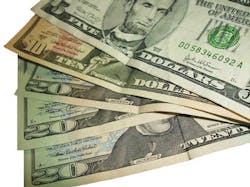Kermit the Frog had it right, especially for home builders.
"Being Green" means you have to build to higher standards, more often with higher costs. But the marketplace has not yet totally accepted these added upfront costs to a new home as being a great value.
What is energy efficiency, why do builders do it, and how can the benefits be presented so that all home buyers will consider it a necessity, rather than an expensive nice thing to have?
Let's check some key words and phrases:
- Energy describes those resources such as petroleum, coal, gas, wind, nuclear fuel, and sunlight from which energy in the form of electricity, heat, etc., can be produced.
- Energy efficiency is simply the process of doing more with less. The goal is to accomplish the same tasks and functions as before while using less energy.
- What's the objective:
- To reduce energy required to regulate temperatures, run appliances, etc.
- To provide cost savings to customers
- To have customers experience useful benefits and perceive great value
- To reduce the world's energy needs
Why do it:
- To help control global emissions of greenhouse gases
- In many countries, energy efficiency is also seen to have national security benefits.
- It's the right thing to do.
And how about this: It can help sell more new homes and remodeling contracts.
Since there are additional construction costs involved, make absolutely sure that you receive the economic benefit and ROI you deserve. To accomplish this objective, you must have a strategy in place and implement a consistent plan of action so that each potential buyer touches, feels, sees, and experiences the benefits and value they will gain by buying your energy-efficient home.
As the late actress, Mae West said, "If you've got it, flaunt it." Football legend Joe Namath said, "It ain't braggin' if you can back it up."
You must present the benefits of your energy system in two formats.
Presenting Home Energy Efficiency to Buyers: How It's Done
Tap into your customers' logical side by presenting benefits that are tangible, such as saving money. Stating a fact in the form of a rhetorical question, to which the only logical reply is yes, can get the point across and cause customers to experience that benefit on a conscious level. For example, "In considering features of your brand new home, I would imagine that like for most people, saving money on energy bills would be of importance to you, is that correct?" Who is going to say, "No?"
Then involve their emotions by connecting with why energy efficiency matters. Another rhetorical question possibility: "Won't it be comforting to know that your children will be warm and cozy on a cold night?"
Next, create a unique selling proposition. "Although it's not required by any building code, we provide you with [mention the energy-value feature(s) that you offer]. Of course, this will (explain the benefits). I don't know why all builders/remodelers don't provide this feature, but we do it because we believe that when all things are considered, it's the right thing to do."
Here is where the rubber meets the road. Most new-home salespeople do a pretty good job of talking about the elements of the energy system. Typically they'll say something like, "This will save you 30 percent on your energy bills." The problem is customers don?t walk around with a calculator so they can immediately crunch the numbers to figure what's in it for them.
Here is how to drive that point home, every time: Make the savings meaningful, easy to understand, and real.
For example, if your energy-value package is estimated to save your customers 30 percent on their energy bills, that 30 percent figure on its own is rather nebulous until you convert that percentage to something tangible. Here's how:
- Present the percentage savings as a monthly amount.
- Let's assume that the estimated monthly cost for energy (heating, cooling, and lighting) for a home that is comparable in size to the product you are offering, but does not have any energy-saving systems, is approximately $500 a month at today's cost of energy. The 30-percent savings in energy efficiency translates into a dollar savings of $150 per month—a sizable number to be sure, but still not impactful enough.
- Now create the comparison. Take the $150 monthly savings and convert it to buying power. Explain that at today's current rates (let's say 4.5 percent for this example), it takes approximately $5 per month to pay off the interest and principal on each $1,000 of mortgage money borrowed on a 30-year loan.
- Here is where you can turn that 30-percent figure into buying power. In your head, you can estimate as follows. Each $5 per month will pay off approximately $1,000 of borrowed money. Also, you are showing an approximate monthly savings as a part of their total cost of ownership in energy savings of $150 monthly. Divide that $150 by $5, and for each $1,000 of mortgage money you get 30, which represents $30,000 of mortgage money not being borrowed. To validate, use Google search to find any amortization table and plug in the $30,000 mortgage amount at 4.5 percent interest for 30 years. The answer will show a monthly payment of approximately $150.
The conclusion—what they are saving monthly (real cash now) as a result of your energy package—would provide them with, on average, $30,000 of buying power over the life of the mortgage. This figure will make any older resale they might be considering at a lower price seem like much less of a bargain.
Let's face it, if it were "easy being green and selling it to the marketplace," everyone would be doing it. They might not be able to do so, but you certainly can.
About the Author

Bob Schultz
Bob Schultz is president and CEO of Bob Schultz & The International New Home Sales Specialists. Write him at [email protected].
Sign up for our eNewsletters
Get the latest news and updates
